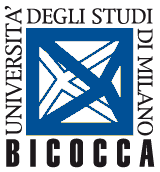Italian Supreme Court of Cassation, (Corte di Cassazione italiana), Civil Section I, No. 13092/2025, 16 May 2025

In the present case, a trade union association requested, by a deed filed in 2013, the establishment of the non-contractual liability of its administrator for violations in the management of the association’s assets and, in particular, for the misappropriation of sums through the use of non-accounting current accounts.
The irregularities had been committed in the period from 1994 to 1999, during which the defendant was an administrator, but only came to light in 2004, when the association was being wound up, through a report by the liquidator who discovered hidden current accounts and serious accounting anomalies. The court of first instance ascertained the wrongful acts committed by the administrator and ordered him to pay damages for breach of contract against the company. On appeal, however, the judges overturned the outcome, in particular by upholding the plea of prescription, holding that the time limit runs from the termination of office, which took place in June 2000, rather than from the time of discovery of the irregularities, which occurred progressively in the years 2004 and 2005, and thus rejecting the claim for damages. The association then decided to appeal to the Court of Cassation, contesting the Court of Appeal’s decision on the commencement of the prescription period, arguing that the period could not begin before the actual discovery of the damage and its causes.
The Supreme Court upheld the appeal filed against the decision of the Court of Appeal of Florence, which had held that the claims for damages brought by the trade union association against its former administrator, in relation to the serious irregularities committed in the financial management, were time-barred. First of all, the Supreme Court confirmed that the non-recognised association is a legal entity distinct from the members, to which the rules on mandate apply (Article 18 of the Italian Civil Code). With regard to the running of the prescription period pursuant to Article 2935 of the Italian Civil Code, the Court reiterated that, on the subject of contractual liability, the prescription period runs from the time when the damage becomes objectively perceivable, even if it concerns an ongoing fiduciary relationship such as that managed by the secretary of an association. Indeed, according to the principle already affirmed by the United Sections in 2008, mere subjective knowability is not relevant, but the objective externalisation of the damage. Lastly, the Supreme Court recognised that the concealment of accounts and documentation by the agent may constitute fraud, thus configuring the cause of legal suspension of prescription period until the discovery of the fraud (Article 2941, n. 8, of the Italian Civil Code).
In conclusion, the judgment confirms the importance of an objective interpretation of the starting point of prescription periods, anchoring it not to the mere subjective knowability of the damage, but to its actual external perceptibility. Moreover, it enhances the role of fraud as a cause of suspension of prescription, offering enhanced protection to the principal in cases of unfaithful and fraudulent management. This is a significant arrest, which contributes to delineating with greater certainty the temporal boundaries of compensatory action in associative contexts.
(Comment by Martina D'Onofrio)

